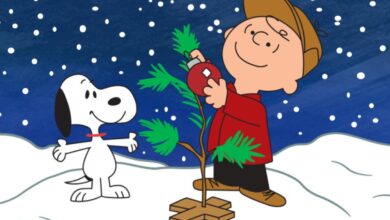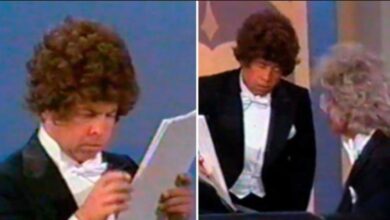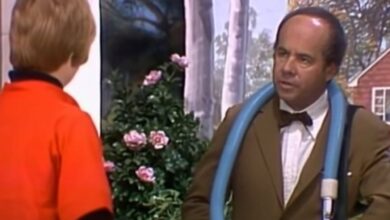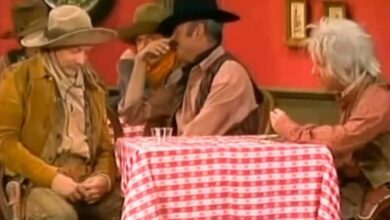Faron Young’s “Hello Walls” Opens the Door to Country-Pop Crossover and Emotional Storytelling in 1961
When “Hello Walls” hit the airwaves in March 1961, few could have predicted the far-reaching impact of what seemed, on the surface, to be a simple song about heartbreak and isolation. Sung by Faron Young and written by a then-unknown Willie Nelson, the track became a cultural touchstone. With its conversational tone and unusual lyrical perspective, “Hello Walls” did more than top the country charts—it introduced mainstream audiences to the poetic depth country music could offer. The song spent nine weeks at No. 1 on Billboard’s Hot Country & Western Sides chart and even crossed over to the pop chart, peaking at No. 12, an impressive feat at the time for a traditional country track.
Faron Young, known as “The Hillbilly Heartthrob,” was already a well-established figure in country music when he recorded “Hello Walls.” Born in Shreveport, Louisiana, in 1932, Young launched his career in the early 1950s and became one of the youngest stars on the Grand Ole Opry. His early sound leaned heavily on honky-tonk traditions, but he always had a crooner’s finesse—his voice carried warmth, charm, and clarity, making him a favorite among both male and female listeners. Young’s showmanship and charisma positioned him as one of country’s most bankable stars heading into the 1960s.
The song’s origins are just as legendary as its success. “Hello Walls” was written by a struggling young songwriter named Willie Nelson, who had recently moved to Nashville after bouncing around Texas honky-tonks. Nelson reportedly pitched the song to Young after other artists had passed on it. Its unusual concept—personifying the furniture and surroundings of a room to cope with heartbreak—stood out for its originality. Faron, trusting his gut and recognizing something special in the song, agreed to record it. That decision would not only change his own trajectory but also launch Nelson’s now-mythic career.
Produced by Ken Nelson (no relation to Willie), the recording took place at Bradley Studios in Nashville. The arrangement was sparse but elegant, built around piano and guitar with restrained backing vocals and just enough echo to make the room feel hollow and aching—mirroring the narrator’s emotional state. Faron’s vocal delivery walked a delicate line: conversational yet melodic, wounded yet composed. There’s a subtle humor in the lyrics, but Young never overplays it; instead, he leans into the loneliness, allowing the novelty of the concept to land without losing the sincerity.
Upon its release, “Hello Walls” was an instant hit. The novelty of its lyrics caught listeners’ attention, but it was the emotional authenticity that kept them coming back. It wasn’t just another breakup song—it was an interior monologue made vivid, a masterclass in musical storytelling. The song stayed on the country charts for an astonishing 23 weeks, and its pop success brought Faron Young a broader audience than he’d ever known. At a time when the lines between genres were still rigid, “Hello Walls” proved that a country tune could win over pop listeners without sacrificing its identity.
Culturally, “Hello Walls” arrived at a turning point in American music. The Nashville Sound was beginning to dominate country radio, smoothing out the rougher edges of honky-tonk with strings and polished production. But rather than resist the trend, Young leaned into it—helping to usher in a new era of country-pop crossover success. His success with “Hello Walls” made other producers and artists more willing to take chances on unconventional material, setting the stage for greater diversity in country songwriting.
The song also had a seismic effect on Faron Young’s career. While he had already enjoyed a string of hits, “Hello Walls” became his signature song. It solidified his status as a top-tier artist in the genre and earned him a place among country’s most enduring voices. It also boosted his presence on television and variety shows, bringing his music into American living rooms at a time when such exposure could reshape careers. Young would go on to have more hits throughout the ’60s and ’70s, but none quite captured the public’s imagination the way “Hello Walls” did.
Its influence on other artists was immediate and lasting. The song’s structure and tone—blending clever lyricism with emotional gravity—became a template for future writers looking to infuse country music with literary wit. Willie Nelson, of course, would go on to become one of the most important figures in American music, and many credit the success of “Hello Walls” with opening the doors that allowed him to break through as a songwriter. The song also encouraged producers to take more chances on unknown writers with unconventional ideas.
Over the years, “Hello Walls” has been covered by a range of artists across genres. Hank Williams Jr. delivered a more raucous version in the ’80s, while Jerry Lee Lewis added his signature piano-driven flair. Even pop-adjacent performers like Tom Jones paid homage to the song in live performances. Each rendition brought something new to the table, but the original remains definitive—anchored by Young’s vocal sincerity and the song’s unique narrative lens.
At the time of its release, Young was navigating both professional success and personal challenges. His reputation as a ladies’ man and hard drinker sometimes overshadowed his artistry, but “Hello Walls” reminded both fans and critics that he was, at heart, a serious and thoughtful performer. The song’s success also allowed him greater leverage in choosing material and directing his own recording career.
Decades later, “Hello Walls” is still heard regularly on classic country stations and features prominently in documentaries and retrospectives on the genre’s evolution. Its phrase has entered popular culture as a shorthand for loneliness or cabin fever, even appearing in comedy routines and literature. The song’s enduring popularity speaks to its emotional truth and lyrical inventiveness.
Musically, “Hello Walls” helped solidify the idea that country music could be both smart and accessible. It pushed boundaries in terms of structure, theme, and audience reach, paving the way for future crossovers and encouraging writers to take creative risks. It also proved that humor and heartbreak could coexist in a single song—an approach that would influence everyone from Roger Miller to Brad Paisley.
Faron Young passed away in 1996, but “Hello Walls” remains one of the great monuments to his talent. It captures everything that made him a star: charm, vocal control, emotional depth, and a willingness to embrace new ideas. The song also endures as a monument to Willie Nelson’s songwriting genius, a reminder that greatness often starts in small, overlooked places.
In the end, “Hello Walls” is more than just a country hit—it’s a landmark of musical storytelling. It invites us into a moment of quiet despair, lets us smile through the tears, and leaves us with a melody that lingers long after the room has gone silent. In a career filled with highlights, this song remains Faron Young’s most unforgettable echo.





